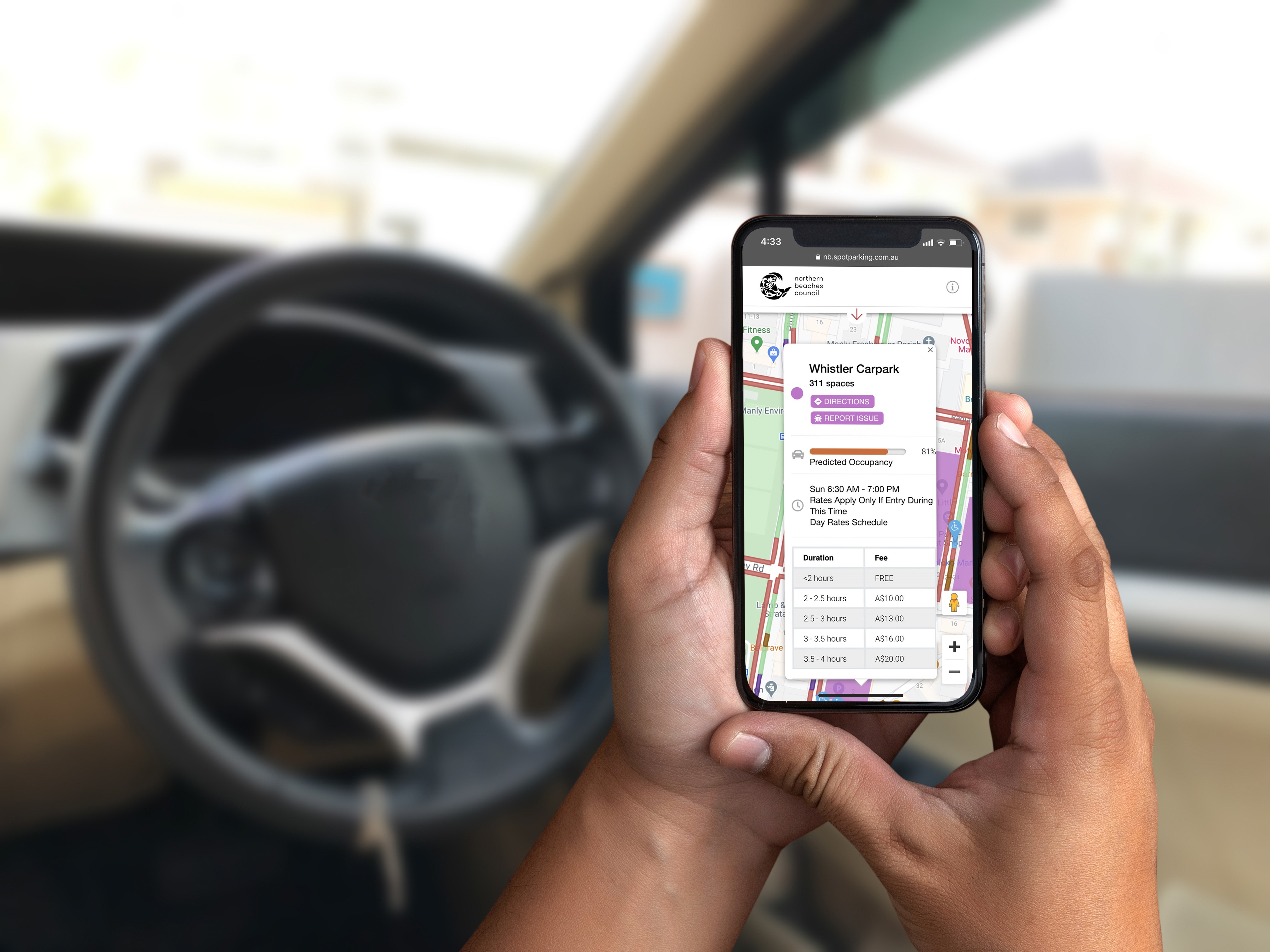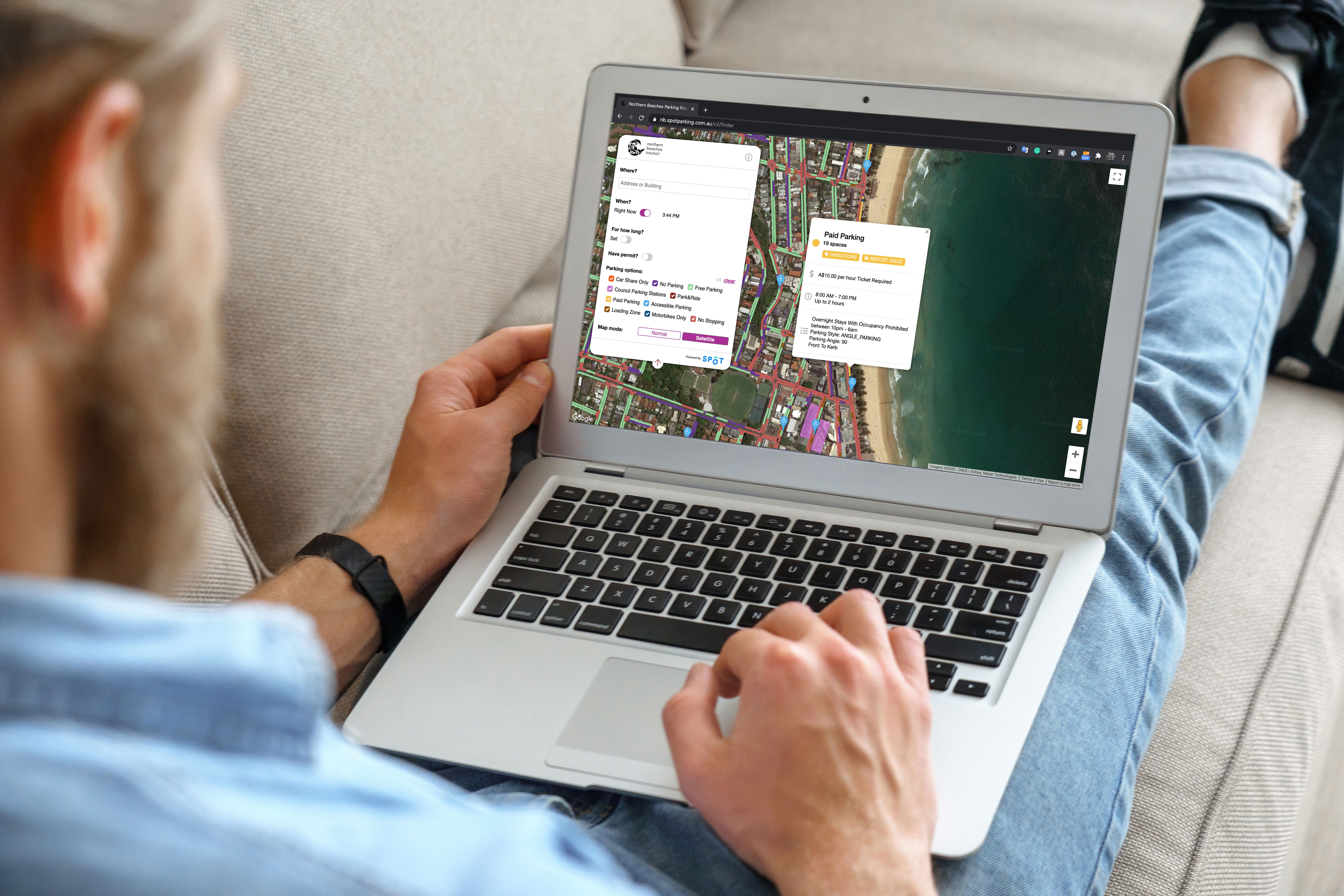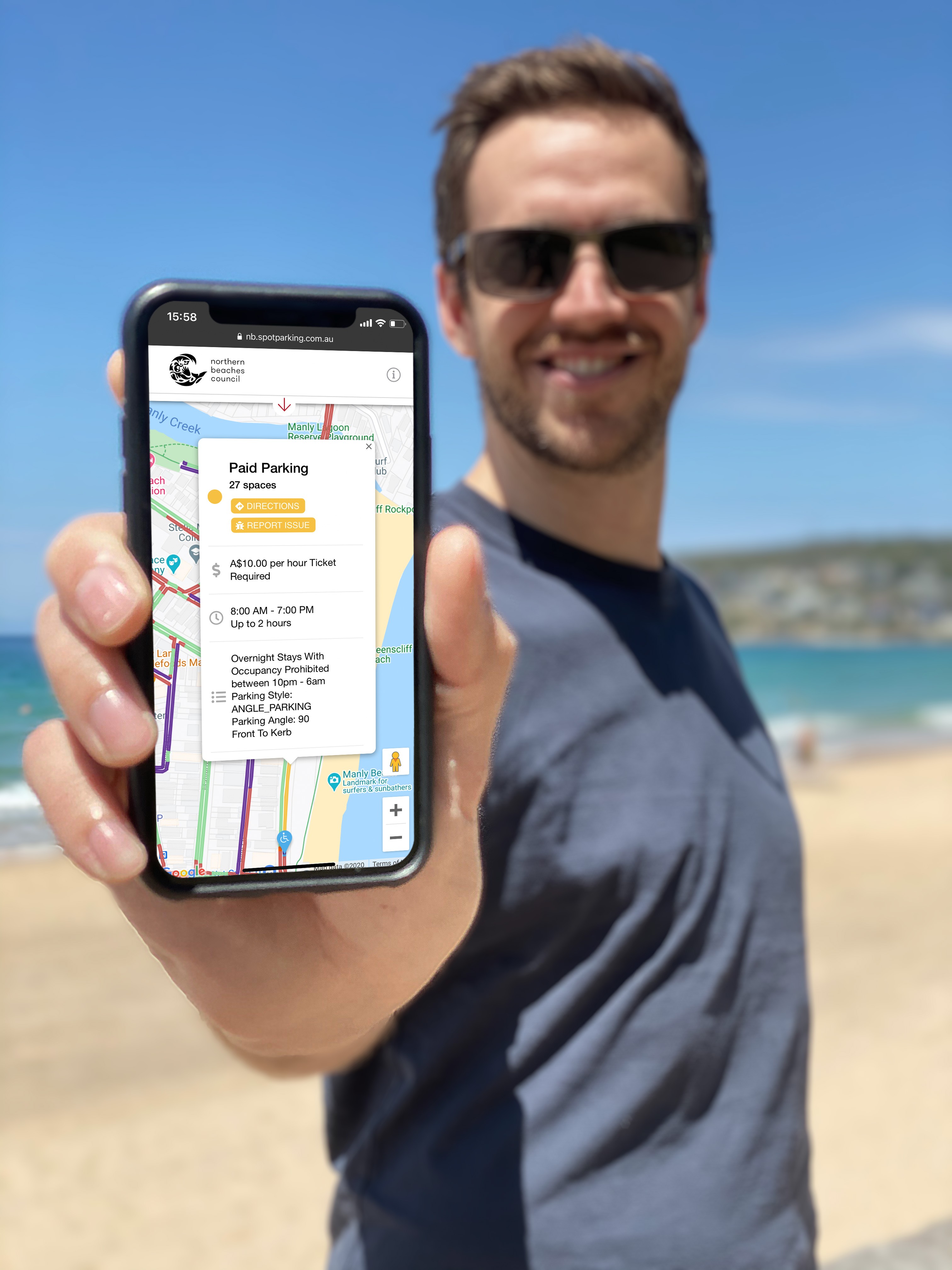In 2020, the Open Data and Innovation team at Transport for NSW launched the Parking Innovation Challenge, putting the call out to innovators to create a safe, frictionless digital solution for drivers that digitises on-street parking and traffic rules and improves the customer experience in relation to parking.
Throughout this 3-part blog series, we sit down with the CEO’s of each of the challenge’s successful entrants to discuss the main issues faced by customers in terms of parking, innovation in the sector, and the process of development involved in making each product what it is today.
Our first parking CEO is Elizabeth Zealand of Spot Parking, which operates in both Australia and the US, specialising in smart parking and mobility solutions.

Can you tell us about your role at Spot?
I am the co-founder and CEO of Spot, which in a small startup means I turn my hand to just about everything. Having been a leader and CEO in Government agencies throughout my career, the pace and challenges of a startup have certainly stretched my resilience and improved my leadership skills and attitude to motivation and innovation in the workplace. It is my role to guide product direction, get the best out of a small team, hustle for clients and investment and service the Board of investors.
What inspired you to create Spot Parking?
I have always been an “intrapreneur” in my leadership roles, driving difficult, innovative or transformative projects in a government context and have always loved applying creative solutions to achieve results. However, it was two parking fines in one day that highlighted parking as a problem I wanted to solve. Spot started as a pay by phone for parking startup, but we soon realised there was a much greater problem to solve as no city or council we spoke with had digitised, accurate geospatial data about their most valuable assets – on and off street parking.
The exciting thing – the thing that keeps us all going even when the journey gets hard – is the way our data can improve urban mobility, reduce congestion and reduce emissions.
I was also inspired to found Spot as a personal challenge given the fact there are so few female founders and even fewer investors in female founded start-ups. Many people said I was “very brave” founding Spot – a code for “crazy” more likely!
What does Spot Parking see as the biggest challenges for customers in terms of parking?
Our customers include drivers, Government and transport businesses.
Drivers: We know from our research that drivers often have difficulty and worry about finding parking or stopping zones. This concern is compounded by a lack of visibility re: their options and confusion when trying to interpret complex signs. This can result in misinterpretation of rules leading to fines or illegal stopping, increased congestion as drivers ‘cruise’ to find parking that may not exist, reduced productivity, reduced safety, and overall, a stressful and frustrating experience.
Government: Curbside data is very valuable for government staff involved in transportation and parking, customer service or strategic planning who are often challenged by lack of asset data.
Transport businesses: From our research and discussion with Governments, kerbside data is also very valuable to comprehensive Open Data Sets will benefit all bodies with an interest in improving driver experience, congestion modelling, ride hail, logistics solutions and MaaS providers. By providing accurate, aggregated, meaningful and standardised data in a digital format these customers can further advance mobility drive smarter, greener, safer communities.
How is Spot Parking addressing/going to address them?
Spot is a pioneer in the application of machine learning to the collection and digitisation of accurate, granular kerbside data which is then leveraged to optimize the driver experience, improve day-to-day operations and ensure readiness for the future of mobility. Spot's offering includes both a consumer-facing mapping service that is interactive, personalized, and up-to-date, and an Administrator view that provides insight into the utilization of parking, answering questions such as who is parking, when, and where?
What has been your experience working with the Open Data and Innovation team at TfNSW?
This Challenge has been seamless in its management and communication. The Open data team have opened our eyes to the possibilities and power of our data when given to the development community, something we never thought we would be comfortable doing! The challenge process really allows government and private sector to work together in an agile way, and to gain real world learning for future projects.
The non-prescriptive nature of the challenge is a welcome antithesis of a traditional procurement path, where tender documentation specifications take so long the technology specified is already out of date. The team really have a passion for providing useful data to encourage private sector innovation, and they think laterally about the problems that can be solved. For example, the Open data team told us about the commuter car park open data, and we incorporated this in our real time availability parking finder for Manly.
How has the incubation process improved Spot Parking?
The incubation process really allowed Spot to show the scalability and accuracy of our technology. The Manly LGA was by far the largest and quickest digitisation we have done, with over 9,000 signs. Given the tight deadline, it ramped up our utilisation of machine learning to assist in the interpretation, drove an improvement in our collection tools following feedback from the collection team, and forged a trusted relationship with the Transport NSW Open Data portal.

What has been the biggest challenge in the process so far?
The process and the project went like a dream as we have tried and true technology and unique expertise. The new and somewhat confronting thing for us was publishing our API in the Open Data Portal in a way that the development community could easily utilise. The confronting thing about this is that any competitor in the world can access our data and build something with it. For free.
So we really needed to do some soul searching on our business model and the role we see ourselves playing in the data ecosystem, and we concluded our expertise is in collection and interpretation of complex data, not building consumer facing apps.
How does Spot Parking use open data?
Spot creates the data for the open data portal, which can be used by the development community.
What does “innovation” mean to Spot Parking?
Innovation is the core of our startup – we are always questioning the way we solve problems and the angle we take on a solution. Our values are learn by do, overshare, the answer is yes and smile. And we live these every day. Some of our innovations come from our clients questions and problems. For example, the City of Greater Bendigo had a strong focus on attracting people with disabilities to the city, so they asked us to publish images of the disabled parking spaces and had their disability reference group rate the spaces for things such as hoist access and a pram ramp. This feature is now offered to all cities.
Innovation also means diversity of viewpoints. When new people join the team we always ask them to review things we take for granted. The team of students who collected Manly came up with using a whatsapp network for in-field Q&A and peer support, saving time and improving productivity.
How do you see the Parking Innovation ecosystem developing? In particular, what do you envisage as the ideal relationship between Transport for NSW, Spot Parking, and local councils in regards to customer experience of parking?
I’m very passionate about an innovation ecosystem given my experience with state and local governments. I dream of a relationship that creates value for all parties by utilising kerbside assets for true mobility improvement, and not just cash cows from parking revenue and fines. The ownership of roads and kerbs has long been complicated and thorny. For example, congestion busting plans that a state government develops may involve the removal of paid parking spaces controlled by the local government.
The question of who pays and where the value is created has led to protracted and often thwarted traffic management. Whilst the state government quite rightly doesn’t want liability for local roads, there needs to be increasing recognition that there is a collective value to utilising curbs in a smarter way.
The advantages of reduced congestion, reduced emissions and improved customer experience need to be valued and monetised to counter the arguments around local government revenue loss. Kerbside management is highly fragmented due to the fact it is managed by individual councils, who often don’t have a clear view of what assets they have.
Kerbside assets are too valuable to just be used for single private use parking, and asset owners need to be more innovative in thinking of asset utilisation.
What are your thoughts on the future of innovation in the parking sector?
The innovation trends I see for parking are:
Frictionless – contactless end to end solutions where spots can be pre-planned, pre-booked guided to spot, paid for digitally
Sustainable – increase in kerb usage for mobility as a service strategies to reduce single private vehicle use, and use parking as a carrot for EV usage, rideshare
Connected – integration of different technologies through IoT for better prediction, analytics and real time data
In my perfect world, there are no meters or parking signs polluting our streets. Digital infrastructure will allow us to search, find, understand and pay for kerbside use though our car or phone or wearable device. Contactless payments solutions such as ParkNPay, and Spot digital kerbside asset data, will make this dream a reality.
Innovations we are working on with our partners all lead to better utilisation information to create predictive analytics on space availability. Through integrating with camera technology we are working with one of the top five universities in the world to predict parking availability by specific permit, such as electric vehicle, or student resident. Using data for better modelling about capacity and utilisation will allow cities and traffic planners to better shape the kerbside assets.
The push for less single use private vehicles will continue. I think I am the only CEO of a parking company who doesn’t have a car!
Ride hail, rideshare, car pool and autonomous shuttles {COVID notwithstanding} will need priority kerbside space to operate effective first and last mile solutions. The ability to be able to change kerbside rules quickly and communicate them to the public using the digital infrastructure Spot creates will help Mobility as a Service initiatives. For example, drop off-only zones can be created where paid street parking normally is during an event.

Green initiatives will continue in the parking industry from environmentally friendly power sources and green building material to the overall push to reduce emissions. At Spot we believe better certainty and faster discovery of parking spaces will reduce emissions created by vehicles circling looking for parking. We will be partnering with air quality sensors to quantify the amount of emissions saved through better parking discovery in our client parking lots.
As seen in an article by Bridie Schmidt in the Driven, a researcher from Sydney’s Macquarie University has said that car parks in an electric vehicle future have the potential to become power plants bigger than South Australia’s big Tesla battery. Professor Graham Town of Macquarie University’s School of Engineering is about to publish research that describes how large car parks – such as at shopping centres – could form mini “power plants” that could help balance the grid.
COVID-19 showed a rethink of kerb use. On and off street parking spaces became COVID drive through testing centres, outdoor dining areas, storage facilities, pick up and drop off zones, community performance spaces and mobility zones.
Any general comments about the future of your product?
The parking challenge has allowed us to demonstrate just how effective and powerful the kerbside data can be for councils, state government and drivers. We want to continue to work with TfNSW, Councils and governments in the future providing this important foundation data.
A huge thanks to Elizabeth for her time and insight. Check out the Spot Parking Sydney Parking Finder demo web app, and stay up to date with the innovations and achievements of Spot Parking by following them on LinkedIn, Twitter and Facebook. Developers can access Spot’s open data and APIs on the Open Data Hub. Don't forget to view part two of this series featuring Mosstyn Howell, Founder and CEO of UbiPark, as well as part three with Piers Higgs of Gaia Resources.

